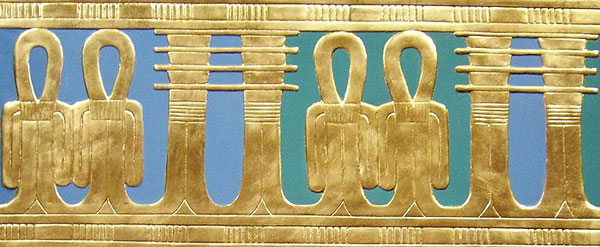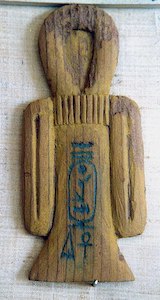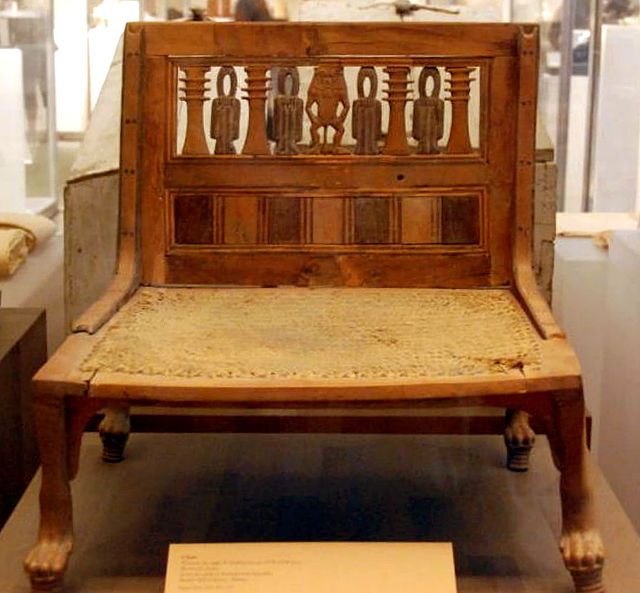The Tjet (Tyet, Tet, Tit, Tat, That, Thet) is also commonly known as the Isis knot, or Isis girdle. Some commentators have argued that the symbol was originally a variant of the Ankh. It has a similar appearance (except its “arms” are bent downwards) and could also have a similar meaning, sometimes being translated as “life”. As a hieroglyph it represented the Tjet amulet.



The Tjet was commonly used to decorate the walls and columns of Egyptian temples, often appearing with the Djed and occasionally with the Was or Ankh. The symbol also appears on numerous items associated with burial, including sarcophagi and shrines. Occasionally, the symbol appears as a personified goddess wearing a knotted dress and it was also used as the emblem for the office of the “kherep-ah” (the palace manager).
The Tjet is thought to date from the Predynastic period and was a popular decorative symbol by the Third Dynasty (Old Kingdom), often appearing alongside the Ankh and the Djed.

In this early period, the symbol was sometimes combined with the face of Bat or Hathor as a symbol of their cult. By the New Kingdom, the symbol was clearly associated with Isis perhaps due to its frequent association with the Djed, which was associated with her husband, Osiris. Thus, the Djed may have represented the masculine power while the Tjet represented feminine power.


The symbol was also linked to Nephthys because of her association with burial and resurrection. From the Third Intermediate Period, the symbol was often depicted in statuary as a pendant hung from a low slung belt.
There is much debate regarding the subject of the symbol. It is similar to the knot used to tie garments in place, and so is often called the “knot of Isis“. Knots were thought to bind magic, and so this would not seem to be an unreasonable suggestion. However, other commentators have suggested that it should really be ‘the girdle of Isis’ or ‘the blood of Isis’ as the symbol represents a female sanitary cloth used during menstruation or an ancient charm to help women deal with menstrual cramps. Others suggest it represents the female reproductive organs and represents Isis in her role as the universal mother.

While we cannot be certain of the original meaning of the symbol, there seems to be a link to blood, power, and regeneration. The Book of the Dead states that a Tjet amulet should be formed from a red stone (such as carnelian, red jasper, or red glass) and buried with the mummy. According to this ancient text – “The blood of Isis, the spells of Isis, the magical words of Isis shall keep this great one strong, and shall protect him from whosoever would harm him”. However, the Tjet was not always red. Tutankhamun was buried with a beautiful blue Tjet, and amulets were also fashioned from yellow sycamore wood (as the tree was sacred to Nut, Isis, and Hathor).
Bibliography
- Bard, Kathryn (2008) An introduction to the Archaeology of Ancient Egypt
- Pinch, Geraldine (2002) Handbook Egyptian Mythology
- Redford, Donald B (2002) Ancient Gods Speak
- Wilkinson, Richard H. (1992) Reading Egyptian Art
- Wilkinson, Richard H. (2003) The Complete Gods and Goddesses of Ancient Egypt
- Wilkinson, Richard H. (2000) The Complete Temples of Ancient Egypt
- Wilson, Hilary (1997) People of the Pharaohs
Copyright J Hill 2016